Essay
for Live Creatives Show’s Premiere Exhibition
Written over April and May 2021 by Thomas RagnarNote from the top that the New York | Melbourne | Singapore triangle is informed by my life-movements and not any real Art Historical nor critical development.
![]()
![]()
![]()
![]()
![]()
![]()
![]()
![]()
![]()
![]()
![]()
![]()
![]()
![]()
![]()
![]()
![]()
![]() KONBANWA!
KONBANWA!




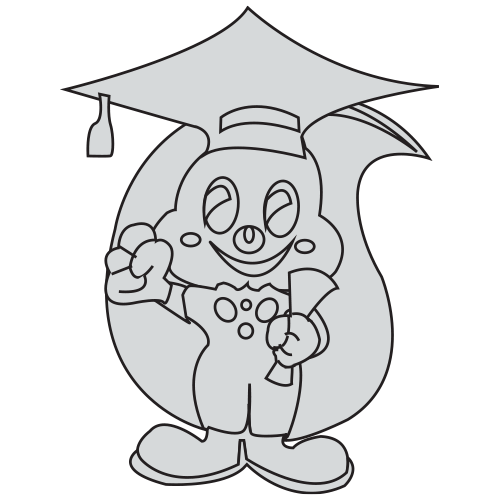
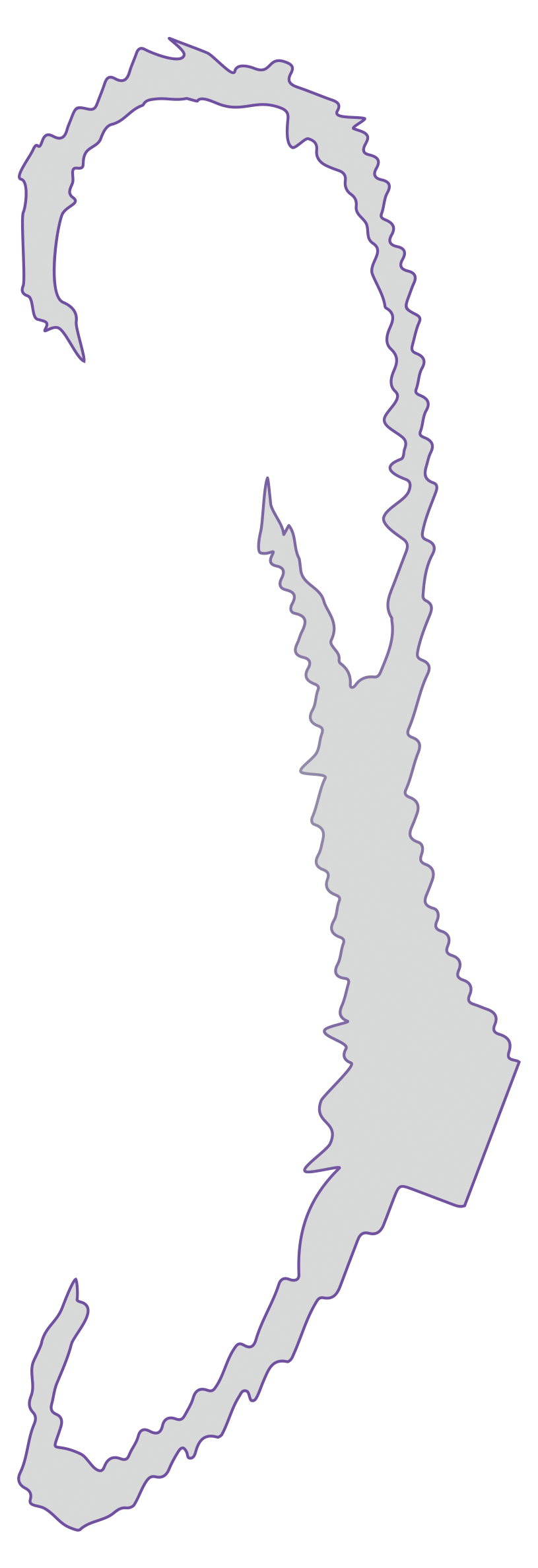
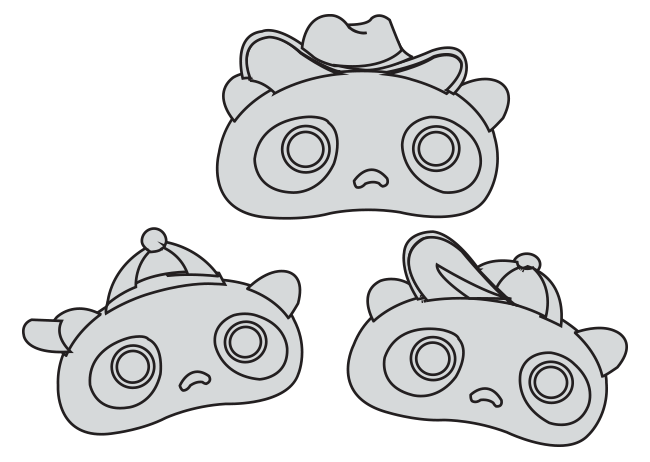



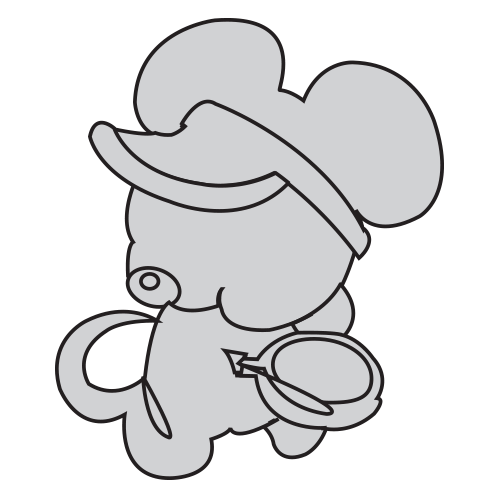

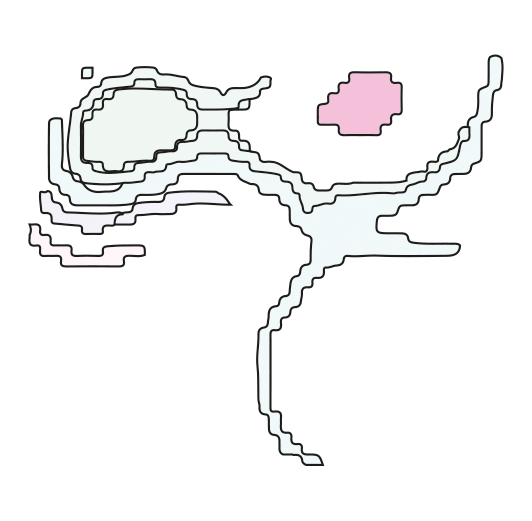





This video exhibition at Supernormal, also showing ‘extended-universe’ objects and media, is the first public showing of Live Creatives Show — the long-awaited reality ‘life show’ on aesthetic labour in Singapore, directed by Zhiyi Cao and Chong Lii. The pair invited me to write an essay to accompany their exhibition, constituting the chattery sequence of texts presented here. The conventional wisdom is that we — Zhiyi and Chong and I — shouldn’t be friends; that in writing Art Criticism for works of art with which one shares an intimacy, judgment stops being clear and one can’t be objective. Not only is this naive about the ways in which artistic communities organise themselves (note that avant-garde art histories are always always artist self-presenting), these are precisely the types of conventions and rituals of ‘practice’ that Live Creatives Show actively disrupts and observes. Plus, my performance of ‘critical-distance’ would fall flat anyway; unlike our Creatives, I’m not a performer…I’m just a grad student and “indie curator”.
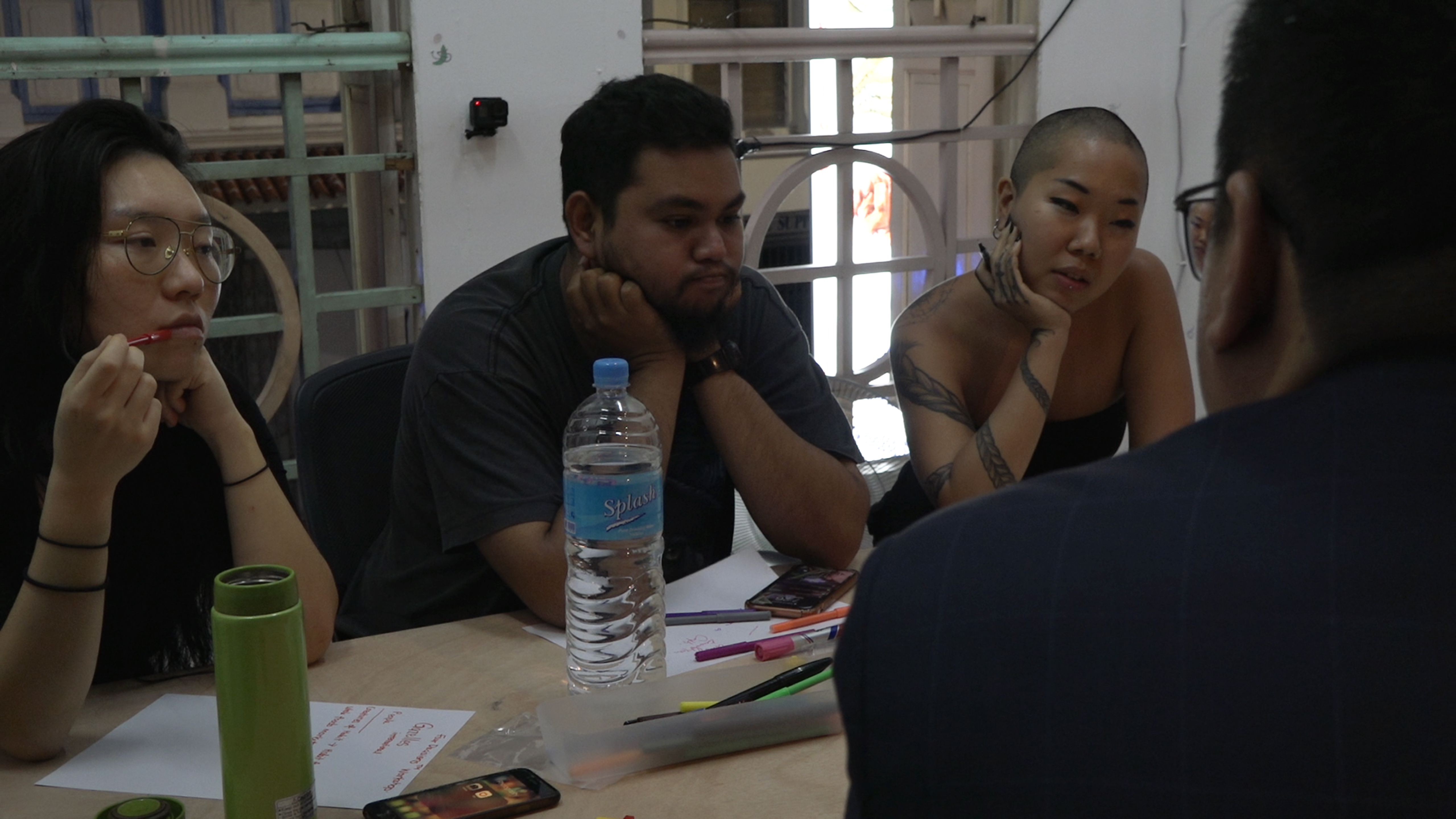
The televisual universe of Live Creatives Show (LCS) begins on the second floor of a shophouse space on Desker Road in Little India, Singapore. At the invitation of Zhiyi and Chong, three artists were issued free desk space in a co-working studio, alongside consultations with various creative professionals plus “opportunities” for networking and collaboration. In exchange, they consented to being filmed over seventeen days for the production of a Terrace House1-styled reality life-show pretexted as “documenting the social and material conditions of aesthetic labour and practice in Singapore”. Over a five “ebisode” [sic] first season, the cast makes art, relationships and content, while being visited by a number of mystery guests: other artists, corporate growth-consultants, curators, anthropologists, life-coaches, ‘the public’, mystics and other members of the art-field. The “Creatives”, as they are referred to in-universe, are Zou Zhao or ZZ (the communist), Divaagar (the bitch), and Sher Chew (the body) — elsewhere described as “Two Chinese Girls and a Keeeeng”. LCS systematically centres the practices and lives of these Creatives, who are diverse in practice, methodologies, desires, economies, ambitions, histories, expectations and needs.
A few weeks after they asked me to write this essay Zhiyi and Chong invited me to their studio to watch a horror movie. When I arrived, they were watching Gordon Ramsay’s competitive cooking show Hell’s Kitchen — they were paiseh but framed it as “research”. Then we watched exotic sea creatures being pornographically butchered for content on the YouTube channel きまぐれクックKimagure Cook. One of the fish had a prehistoric face and throat. After some deliberation, and at Chong’s suggestion, we chose to watch Abel Ferrara’s The Driller Killer, a 1979 New York slasher movie about, among other things, Reno Miller — a struggling artist (painter, male) who *SPOILER ALERT* murders his homosexual art dealer / curator by repeatedly drilling him in the chest after luring him into his studio under the pretence of wine and sex.
![]()
Was this a threat? ,,/(òÓ,),,/
Reno’s ‘muse’, Pamela Bergling, — who doesn’t know how to use a power-drill — finds the body moments later. She was played by Baybi Day, who was an IRL 22-year-old performance art student and never appeared in any other movies after. She was our favourite.

Was this a threat? ,,/(òÓ,),,/
Reno’s ‘muse’, Pamela Bergling, — who doesn’t know how to use a power-drill — finds the body moments later. She was played by Baybi Day, who was an IRL 22-year-old performance art student and never appeared in any other movies after. She was our favourite.
GOOD MORNING!
LCS is a complex network of “lookings”. As the critical reception of LCS is folded into its own timeline, there is no outside. LCS’s self-generating social ecology is most directly exemplified by the ebisodes being formally constituted through two distinct sets of footage. As per the formal structure of Terrace House, a second group is assembled after the initial Desker Road studio sessions and are recorded while being screened the footage, capturing their live reactions and ongoing commentary that cuts into the ebisodes at various intervals as the narratives arcs unfold (or devolve). The commentary couch is Chand Chandramohan (who, with Divaagar, is half of Desigirl69), Milon Goh2, Isaac Chan, Mengju Lin (of Radioriotgrrrl and Terrapin) and Sonia Kwek — all of whom are variously involved in the field of art. This arrangement of viewership, value production, and judgment is further problematised by the local tether of the show’s IRL context, disallowing the types of distance that’s typical of both Terrace House and the reception of art by a “public”. In this way, LCS establishes a disharmony within the traditional demarcations of viewing — object, artist, beholder. Reception and authorship, and a remove or a space of judgment, bleed into each other. I somehow sense some para-social solidarity with the commentary couch — I hope they like this essay; and I hope this essay (echoing LCS’s ambitions) suspends standard divisions.A work I’m reminded of … of shows containing “life”
In 2006, artist Rafal Betlejewski and curator Barbara Piwowarska realised that they were crushing on each other. Both were married to other people and as they were both coupled in traditional monogamous arrangements, this was a problem. Betlejewski and Piwowarska decided to speak to their respective partners and subsequently all parties came to the agreement that the crushing pair would develop an exhibition project exploring this problem at Orchard, a now defunct and heavily mythologised cooperative gallery in New York’s Lower East Side. The “substance of the experiment”, to use the language of the press release — which also credits the pair as “Characters/Roles” — was the relational experiences activated by the initial proposition of the exhibition project.3 I Like You and You Like Me (2006) was simple and strict in structure: the pair would enter the storefront gallery at 10am on Friday December 29 and remain there until 6am on Sunday December 31, under the condition that prior to exiting they would decide whether they would divorce their respective partners and start a romantic relationship with each other. By Sunday, once the project’s strict limitations had been met, the two decided they didn’t like each other much at all.
Isaac Chan, one member of the commentary panel, says in ebisode 3, “I can’t wait to see how this turns out”, as he raises a mimed magnifying glass to his eye. Divaagar, unlike Sher and ZZ, regularly makes eye contact with the camera and self-identifies as “more of an ‘observer’ than participant” — also commenting on how he’s “acting”. This is quintessential queer’d performance of observation, a subject that’s at once enveloped and negated through the “performance” of self from within the mechanisms of dominant culture. These ideas are further elucidated in the prophetic essay on Pedro Zamora’s performance on season 3 of The Real World: San Francisco from José Esteban Munoz’s Disidentifications (1999) — if you like theory and stuff, check it out. During a confessional, Divaagar lays out an ethics of how to interpret response: “I think that’s also a very unfair expectation. The audience doesn’t owe anyone anything. Some people have more internal responses and some people just don’t care.” In the closing scene of the second last ebisode, ZZ sits with Zhiyi and Chong and screens for them the “For Singaporeans” version of her monologue Ritual for an Apology (for Singaporeans), produced for the Institute of Contemporary Art’s 2016 group exhibition called The World Precedes the Eye. “Who is that person?… is that really me!?” She says with her hands covering her mouth while laughing (maybe crying) in hysterics.
Boom-b00m-boom
The preproduction story for LCS is that, for the 2020 edition of Singapore Art Week, Supernormal — an independent gallery founded by Ong Kian Peng in 2017 that intermittently shows early career Singaporean artists working with technology — invited Zhiyi, Bani Haykal, Joo Choon Lin, Yue Han and Xafiér Yap to present works-in-progress for an exhibition titled The Open Workshop. The press materials said of the in-progress format that the exhibition references “traditions of process art”4 and attempts to “demystify [for audiences] the role of technology in art-making”5. Embodying these thematics, Zhiyi further extended her invitation to Chong and invited him to collaborate in launching a semi-autonomous co-working space and artist residency within the group exhibition — a gesture of drawing something out to its presupposed conclusion. Given the (vaguely) accelerationist politic of LCS — it is almost entirely predicated on the mobilisation of archetypes and the machinic conventions of capital production — it would be naive to think that I could write “about” LCS without being incorporated into its taxonomising apparatus through a type of hyperstition6 and self-parody — remarkably even within the absence of cameras. It would be counterproductive, even, in my “role” to try to mediate, break-script, or perform a critical distance; instead, allowing for the recursive dynamic of Zhiyi and Chong’s process to play out over me seemed like the more lucid exercise. This exchange, one of currency ($300 and a less quantifiable amount social and reputational capital; and network cross-pollination — I hope one day to help facilitate a LCS: Down Under), illuminates a predominate dynamic in curatorial writing: that of applying language (curatorial or historical) in relation to artwork as an exercise in legitimation, through the production of exhibition-specific art discourse. That exchange and its socially valorised conditions, from within a set of exhibitionary functions and their reproduction, is the object of focus here, and it is precisely these types of social and procedural arrangements that LCS asks us to consider.
To lay out further the expanded arena of LCS’s
constituencies: the commentary sessions were filmed at Aliwal Arts Centre in
the studio shared by design firm Currency (led by Melvin Tan) and art
collective INTER-MISSION (Urich Lau and Yue Han) — who also run a shared artist
residency together called H0thouse for which I am currently an artist in
residence. The in-group currency of art production is evident. Even further in
that one the mystery guests on LCS, the tarot reader whose name is art naming 奇能, was also recently the subject of the inaugural
solo exhibition at Raga, an open(ish) studio and exhibition space run by LCS
Creative Sher with studio-mate Pallavi. Also worth noting is that LCS was
filmed partially by members of Zhiyi’s other collaborative project, Pure Ever,
consisting of Hilary Yeo, Rifqi Amirul Rosli, Raigo Law and Elsa Wong7.
The excess of names and spaces does something important in that it affirms a
locality typically absent from this type of material — the remove of TV can’t
be achieved in LCS, and without distance the work authorises the type knowing
that only comes with a presence in participating in a community. A type of
style or culture of critique happens when you can turn and address in-ward.
Too, there is power in not addressing, or appealing to, an ill-defined public —
after all, it was between the Desker Road filming sessions in January 2020 and
the H0thouse commentary sessions in March 2021 that the Singaporean public
ranked “Artists'' the “least essential” members of a society. Unlike many
others, I thought this was very reasonable; more so though, its placement
alongside mostly information workers was to me the more revealing data point.


Regardless of whether that public is right or
not I’m reminded of the bombalicious Tang Da Wu’s 1995 gesture and Straits
Times follow up, demanding that people “pay more attention to the arts” and
echoing himself, “I [he] am [is] important”. Zhiyi and Chong are considerably
more ambivalent; nihilistic even — what aligns these two projects is this
paradoxical play on non-advocacy. Mounted by The National Arts Council and The
National Heritage Board, Singapore Art ’95 was an extensive showcase of
293 artists that advanced a specific and prefigured set of cultural symbology
cultivating taste for a shared and nationalist cultural imaginary. During the
opening reception, Da Wu, who was not represented in the exhibition, approached
then President Ong Teng Cheong holding a suit jacket with the words “DON’T GIVE
MONEY TO THE ARTS” embroidered in gold thread on the back. Da Wu asked for
President Ong’s permission to wear the jacket throughout the evening’s
ceremonies. Likely confused and not fully cognisant of the extent of his own
participation in what was ostensibly a performative artwork, President Ong
smiled and nodded diplomatically and proceeded to greet others in attendance.
This oft-evoked story is regularly discussed within the narrative of Da Wu’s
ingenious tact in his execution of a piece of performance art, or of
“unscripted theatre”, during a period of Singapore’s history where the former
was — while indirectly — illegal. The persistent presence of a camera and the
instrumentalisation of an opening reception as a site of artistic production is
not often the focus of discussion with regards to the sardonic gesture. Chua
Chye Teck, quiet and unassuming in contrast to Da Wu’s gold-threaded pomp,
followed his friend closely throughout the entire event taking an amount of
photographs that were in excess of what would be necessary to document the
interaction between the artist and the President. Chye Teck continued to record
even after Ong Ten Cheong had left and the performance had “ended”, capturing
Da Wu talking and laughing with friends, gathering refreshments, mingling —
living as an artist does while simultaneously exercising a critique in the
material and procedural conditions that constitute those rituals of
professional practice. This surplus of recording may initially seem incidental
or banal and my attention to it here arcane — partially true — but I point to
it in an effort to reimagine the function of the photographs as being operative
less as performance-documentation and more so as documentation of a social
history of Art.
“I just had a sip of that Sacred Hill sauvignon blanc and it was fucking disgusting!”8
“I just had a sip of that Sacred Hill sauvignon blanc and it was fucking disgusting!”8
Another LCS art historical cousin is MeowTV
(2018–2019), a four-part series of videotapes produced by Carmen-Sibha Keiso,
with footage filmed during the opening receptions of Meow Gallery’s first four
exhibitions, each a solo show by artists Brennan Olver, Alethea Everard, Liam
Osbourne and Hana Earles respectively. Meow Gallery operated out of the
living room of a rundown share-house in the inner-north of Melbourne that three
people (Brennan, Hana and Calum Lockey) were living in for $800 a month.
Far less watchable and more abject than LCS, one of the most pronounced
dynamics of MeowTV is its cynical commitment to performing its own artificially
manufactured historicity and of the self-mythologising nature of making Art.
Captured not by reviews or essays such as this, Meow Gallery affirmed its own
methodologies of writing its history through producing its own video material.
More conventional approaches to developing a history of a space is a process of
external re-enforcement that often produces a sense of estrangement, between
the doing and the recounting — a native feature of discourse that members of
Meow were likely sensitive to, capturing instead the reality of itself as it
unfolded, for better or worse. Occasionally in MeowTV a sock puppet
(ventriloquised by Brennan) of a flower harasses artists and people at the
openings asking them if they have trust funds. I remember that at one point a
CGI rat was being considered as one of the members of LCS’s commentary couch.
I’m pretty sad that didn’t happen. But, sources tell me that Philip Ullman is
softly working on a Swedish LCS spin-off with said rat.
From part 3 of MeowTV; someone looking a bit heartbroken… “I’m realizing now that this isn’t a gallery, it’s just a party”.
From part 3 of MeowTV; someone looking a bit heartbroken… “I’m realizing now that this isn’t a gallery, it’s just a party”.
Shared across Meow TV, Don’t Give Money to
the Arts (1995) and LCS is that the surplus of self-made media images
provides opportunities for more procedurally and self-reflexively oriented Art
Historical practice. In folding the highly constitutive and regularly elided or
euphemised dimension of art practice — such as attending opening receptions or
artists’ personal frustrations with regards to available models of funding —
into our conception and practice of Art History, we develop a space for
conducting an analysis of the greater extent of an artist’s contributions as
both functioning within the designated terrain of Art History and in the
society in which that History functions. While the contemporary orientation
toward “Exhibition Histories” as a field or approach is in some respects born
from a similar set of ambitions — that of approaching Art History in a more
holistic way — those approaches only attend to the extent of incorporating
“reception” and the specifically curatorial developments of the art historical
timeline into its historicising schemas — continuing to elide the social and
material conditions of arts production in favour of its exhibitionary and
discursive formats.
One of my first questions to Zhiyi and Chong was, “on a binary scale of ‘cynical’ to ‘sincere’, where does this project fall?” I don’t remember their answer and in retrospect, I don’t think it matters.
One of my first questions to Zhiyi and Chong was, “on a binary scale of ‘cynical’ to ‘sincere’, where does this project fall?” I don’t remember their answer and in retrospect, I don’t think it matters.
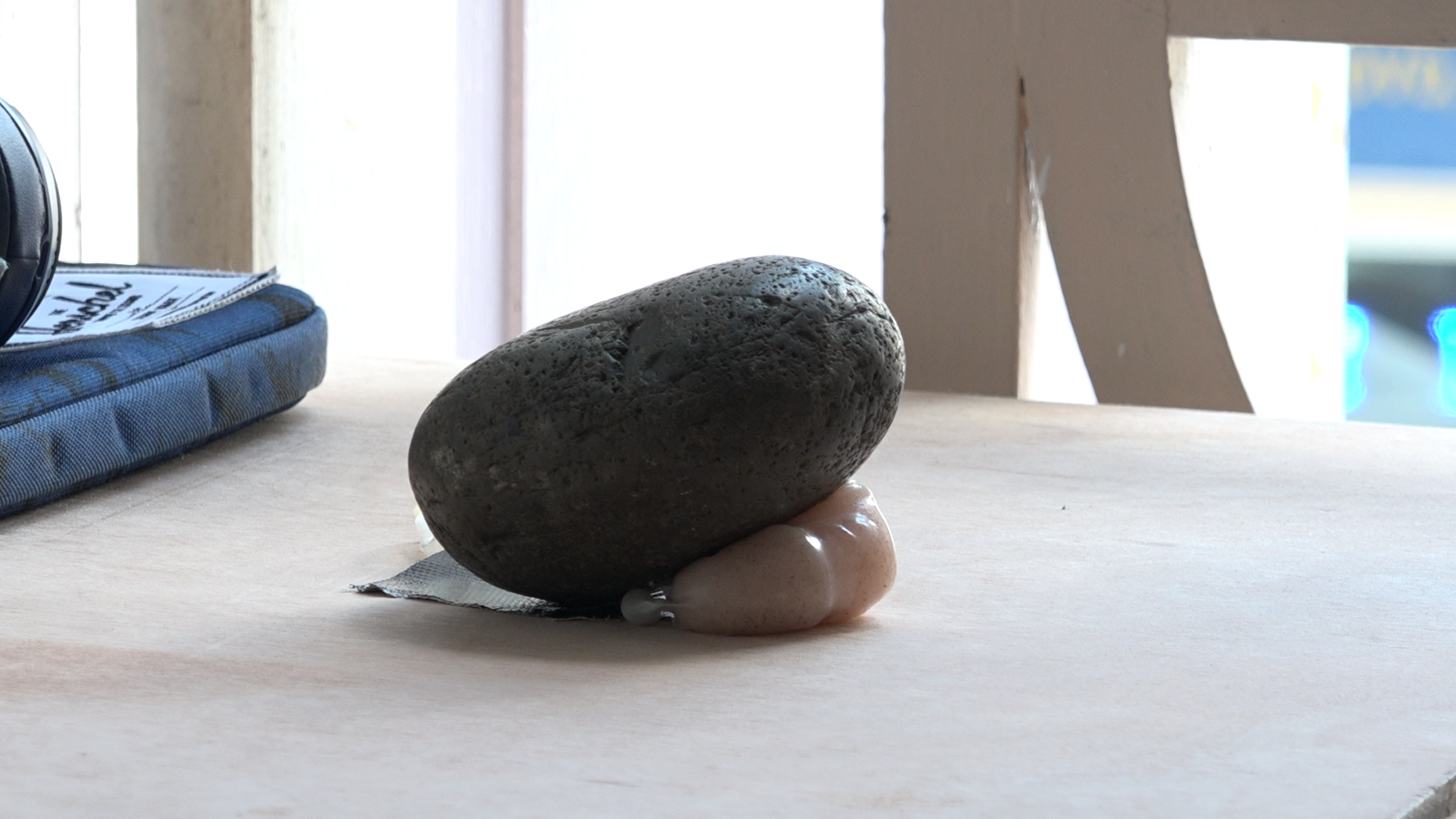
Hey bitch.
“Please hold your questions for… ever”9Another work that mobilizes a similar dynamic of tensions that run through a locality, How To Write a Compelling Proposal (2018) is a scripted performance work by Desigirl69 — a two person collective made of Divaagar and Chand Chandramohan. The work was performed once in 2018 at Coda Culture and again for The Substation’s online Isolation programme series held during Circuit Breaker (the Singapore government’s euphemism for lockdown). The two self-elect and speak on behalf of Singapore’s top consultancy for artists and, over a sharp 20 minutes, they perform their interpretation of National Arts Council bureaucrats while pulling images of known artworks that did receive funding according to different criteria.
“We like everything about Malay culture, except the people”,
“make work about Nyonya or shapes”
or “Gay rights are a Western value—we like white people, not Western values”.
I know a lot of people didn’t like this work and that many camouflaged their upset behind concerns of ‘copyright’ and ‘intellectual property’10. I love this work.
Too close?
2 soon?
Two especially dynamic scenes from LCS play out
when multiple and opposing metrics of value are being projected within a
singular scene. Shawn Chua, of soft/WALL/studs and the Bras Basah Open
School of Theory, visited the Creatives for workshops on improvisational
movement and picture framing — which Divaagar, who regularly breaks the fourth
wall, insisted was about ‘framing’ both “physically and metaphorically”11.
After the workshops, Shawn is filmed off-set where he offers his lengthy
commentary on Sher’s spirited ‘performance of refusal’ with regards to
“institutionalised pedagogy”. In their introductory remarks of the following
ebisode, the commentary couch laughs and impersonates him and his, perhaps,
decedent use of language — artspeak. “So, let me ask you…what is a pedagogy?” —
Milon replies, coughing first, that “a pegging-gogy, excuse me, a ‘pedagogy’,
is a teaching practice that one adopts”. Chand — holding her phone and
referring to Google — refutes with “I looked it up, ‘pedagogy’ is just another
word for education…*rolls eyes*, why can’t you just use the word
‘education’? *cringing*, why? why!? why can’t you say it!”, Isaac taps
her on the shoulder and points off screen, “look at the cameras and say it
again”. The couch clearly does not respond well to embellished language.

The other similarly antagonistic misrecognition
of value is when coaches from Growth Catalyst, a business upscaling consultancy
company, visit the Creatives and advise that “it’s all about forming good
habits. It’s about doing the right things, and then if you keep doing the right
things you are able to get better and become successful.” In my favorite scene,
the representatives hand the Creatives a limited set of lego pieces and the
single instruction, “Build a duck”. The takeaway from the workshop is that each
participant was given the same pieces but invariably came up with a different
‘duck’; I guess this is making some claim with regard to the essence and
uniqueness inherent in us all. Remarkably, it’s quite telling how the Creatives
respond to this prompt because it essentially mirrors how they each engage with
the show’s production itself. Divaagar does it correctly and ‘wins’. Sher
doesn’t build the duck, and instead lays its deconstructed parts in a grid-like
form on the table. And ZZ makes the duck ‘wrong’. At a later point in this
scene, presumably after finding out that the Growth Catalyst workshop is being
conducted pro bono, Sher asks how much people usually pay—Sher’s jaw
drops at the 5 figure number. Apparently the coaches were very eager to come
and visit the Creatives as, according to the two of them, in the field of
business-optimization and coaching, artists are a highly active but vastly
under researched demographic.
The task of preparing curatorial or historical
terms from which to frame LCS’s premiere exhibition is a complicated one. It
asks for a type of writing that is also doing, relating, critiquing, extending
and amplifying LCS’s recursive format and basic motivations through a critical
and self-reflexive looking at the conditions through which reality and “life”
are produced and consumed through culture — to cite H0thouse’s fundamental
aesthetic premise, “a looking” of “not shying away from the excess of layers”.
The historically persistent “splitting-off” that happens in arts discourse —
the splitting of art’s production from its presentation and lived reception or
from the lives of artists and their relations — is one of most problematic
preconditions of writing on contemporary art. Preoccupied with historical
narrativisitation or of comparative analysis, writing appropriates external
modes of precedence over experience, or — given LCS is “about labour”— the way
that writing (performing knowledge) intervenes in the social autonomy of
artists from the homogenising and euphemising pressures and practices of the
discursive activities of intuitions (and individuals) engaged with contemporary
art. LCS’s self-contained universe paradoxically resolves some of these
questions. If understood as an exercise of recording — or of historicising — a
specific corner of the art world, of artists in a particular time, an
alternative practice of emancipated Art History emerges. LCS writes itself.
Thinking back to Da Wu and Chye Teck, while I haven’t seen them and I don’t know if they exist, I would imagine there are many photographs of Da Wu’s friends trying on his embroidered jacket on the same roll of film, silly pictures of friends for friends. If Live Creatives Show were a model of historicising, those photographs would be canon instead of the ones chosen by The National Gallery Singapore.
…
Say waeyo! - waeyoooo
。゚ヽ(゚´Д`)ノ゚。

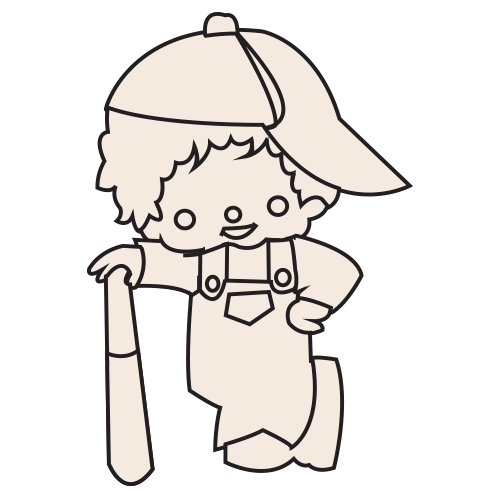
Notes
[1] Hit Japanese slice-of-life ‘reality’ porn[2] Who is elsewhere credited under the names Sjorn, Tam’e, WC and Pegging Goh
[3] Rafał Betlejewsk and Barbara Piwowarska. “I Like You and You Like Me”. December 20 2006. Orchard. Press release. Accessed March 31 2021. https://www.47orchard.org/exhibition/I_Like_You.html. Likely co-written with R. H. Quaytman.
[4] Ong Kian Peng. “The Open Workshop", Artweek.sg, June 1 2017.
[5] Ibid.
[6] a concept from cybernetics that defines “culture’, as such, as a self-fulfilling prophecy, or positive feedback loop
[7] Other crew or guests are Anathapindika Dai, Jimmy Chiu (aka Wanglian-C11), Johann Yamin, Rifqi Amirul Rosli, Rohaizah Binte Abdul Rahman, Ed Khoo, Xindi Ye, Ryan Benjamin Lee, Amrit Dhillon, Faraz Hussein.
[8] Said by Brennan Oliver during the opening of her exhibition at Meow on episode 1 of MeowTv
[9] The closing line, delivered by Divaagar for Desigirl69’s performance How to write a compelling proposal.
[10] The worst concept ever.
[11] Divaagar in “Two Chinese Girls and a Keeeeng” Live Creatives Show, Zhiyi Cao and Chong Lii, season 1, ebisode 3, Supernormal, 2021.